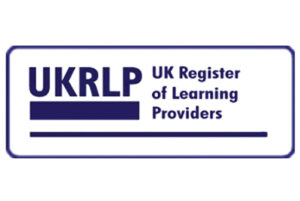This is Photoshop's version of Lorem Ipsum. Proin gravida nibh vel velit auctor. Aenean sollicitudin, lorem quis bibendum auctor.
This is Photoshop's version of Lorem Ipsum. Proin gravida nibh vel velit auctor. Aenean sollicitudin, lorem quis bibendum auctor.
Technobeacon Consulting Ltd is a dynamic, specialist provider of Cyber Security and Information Assurance courses. We have been integral in shaping the Cyber Security education landscape in the United Kingdom by the commissioning, developing and introducing high end course materials into this space.
Technobeacon Consulting Ltd is an independent specialist Cyber Security training company whose total focus is the provision of specialised courses and appreticeships catering for Cyber Security and Information Assurance professionals.
Cyber Security, IT Security, Information Risk Management, Compliance and Governance training are the cornerstone of our course offerings.
The escalating complexity of Technology and Business needs will always result in companies being exposed to security threats, and most networks will be breached if faced with a sustained attack. The key to minimising the damage hackers do when they inevitably force their way on to corporate networks is to make sure your Cyber Security staff are knowledgeable enough to respond appropriately to minimise the harm Intruders can cause to the Organisation.
Our mission is to be the best that we can be in providing our clients with the comprehensive knowledge they require to protect their organisation in Cyber world.
Think about us? Take a look yourself in the testimonials below.
Olawest’s training is first class. The visual materials are excellent and easy to follow. Post-training, he was helpful and supportive too. I would definitely recommend.
– Linkedin.
Bamidele is a seasoned cybersecurity professional / trainer. He managed and mentored me at the early stage of my career in Info sec. His depth of knowledge in the field is impeccable. I will recommend him to anyone looking for a career in cybersecurity / Info sec.
– Linkedin.
I attended Olawest General Data Protection Regulation (GDPR) training some years ago and got a role even before the class ended! Olawest and his team were extremely supportive, helpful and always encouraged me. I have no iota of doubt in recommending his Cyber Security training and services to any one interested.
– Linkedin.
The team has been taking several pre-emptive infrastructure measures to help prepare for significantly increased traffic as a growing number of schools move to fully online courses. We will continue to monitor closely and take any additional steps required to provide a seamless service.
This is a technical introductory course to the fast-growing field of Cyber Security. The course will provide hands-on technical exposure to delegates in vulnerability assessments, web application security, security incidents response and management, Azure security, and AWS security.
Security Risk and Compliance Training Alliance is now offering an industry-leading Security Risk and Compliance Training course. This dynamic instructor-led course covers all known aspects of Security Risk and Compliance Training that exist in the Security Risk and Compliance environment today. This course provides a detailed overview of all Security Risk and Compliance issues, including threats, risk mitigation, node security integrity, confidentiality, best security practices, advanced Security Risk and Compliance Certification and more. The in-depth lab sessions will provide the student with practical, real-world tools for not only recognizing security threats but mitigation and prevention as well.
Objectives
Attend the Security for Security Risk and Compliance salary Professionals course and pass the exam, gaining the certification.
Target Audience
Day 1: Security Risk and Compliance Certification Fundamentals
Module 1: Fundamental Security Risk and Compliance
Module 2: Consensus in the Security Risk and Compliance
Module 3: Advanced Security Risk and Compliance Security Mechanisms
Module 4: Smart Contract Security
Day 2: Security Risk and Compliance Implementations
Module 5: Security Risk and Compliance Risk Assessment
Module 6: Basic Security Risk and Compliance
Module 7: Security Risk and Compliance for Business
Module 8: Securely Implementing Business Security Risk and Compliance
Day 3: Known Security Vulnerabilities and Solutions
Module 9: Network-Level Vulnerabilities and Attacks
Module 10: System-Level Vulnerabilities and Attacks
Module 11: Smart Contract Vulnerabilities and Attacks
Module 12: Security of Alternative DLT Architectures
Security Architect Fast Track Training London The student will be exposed to Security Architect Fast Track's adaptable feature set which allows the developer to design decentralized applications for countless applications. Students will also participate in hands-on programming lab sessions to learn, develop, and advance their skills in Security Architect Fast Track Training London development.
The Security Architect Fast Track Training London is designed for those seeking an in-depth understanding and development experience of the Security Architect Fast Track Training London. Students will participate in approximately 50% programming lab time providing practical experience, enhancing their knowledge and existing skill set. Due to the technical programming lab content covered in this course, it is not recommended for those without programming knowledge and experience.
Objectives
Target Audience
Target Course Audience Include:
Security Architect Fast Track Exam and Smart Contract Basics Security Architect Fast Track Certification
Smart Contract Programming Basics
Understanding Decentralized Information and Web3
Basics of Ethereum and the EVM
Solidity Advanced: Modifiers, Mappings, Structs and Inheritance
Understanding Deployment and Costs Security Architect Fast Track Certification
Mining, Proof of Work vs. Proof of Authority
Current Problems, Solutions, Outlook, Serenity Security Architect Fast Track Certification
Working in Teams, Testing and Versioning
IPFS and distributed File-Storage
Bonus Section: Compilation
Labs:
Lab 0 – Understanding Components
Lab 1 – Variables
Lab 2 – Ropsten and MetaMask
Lab 3 – Web3.JS Operations
Lab 4 – Events
Lab 5 – Modifiers
Lab 6 – Mappings and Structs
Lab 5 – Modifiers
Lab 7 – Inheritance
Lab 8 – Gas-Costs and Deployment
Lab 9 – Final DApp, Tie it Together
Lab 10 – Mining
Lab 11 – Truffle Setup
Lab 12 – Truffle Unit Tests
Lab 13 – IPFS
Bonus Lab – Solidity Compilation
This instructor-led virtual Cloud Security Training course is designed for developers and administrators who want to take a comprehensive deep dive on Cloud Security.
We cover cloud Security services for AWS and Azure.
Our team has taken several pro-active measures so we can continue to support our clients as many more businesses work remotely. We will continue to monitor the situation closely and take any additional steps required to provide a seamless service.
Conduct automated vulnerability assessments of internal and external vulnerabilities; triage and prioritize findings for remediation for clients.
The Qualys Policy Compliance scan runs through 4 principal phases:
It is worth noting that by default the Qualys Policy Compliance scan will retrieve data for all Controls - regardless of what, if any, a Policy might specify. It is only later, during the reporting phase, that data points for Controls are evaluated against Policies that the user defined.
Below is a flow-chart that illustrates the steps the scan engine goes through. Please click to enlarge.
We conduct internal and external penetration tests for clients to ascertain their security posture and comply with security frameworks such as PCI DSS, Cyber Essentials, and ISO 27001.
Conducting business on the Internet has become an essential requirement for almost every organization. However, those web applications are exposed to near-constant bombardment from entities looking to exploit vulnerabilities for malicious purposes. A frequent, in-depth security review of those applications is necessary to ensure that your critical assets are protected.
If your website has been hacked recently, review the recommended steps below to recover a hacked website and prevent future hacks.
To reduce the probability of future hack, take the following actions:
If you’re using WordPress, for example, ensure you’re on the most recent version of WordPress. CMS platforms push out updates to address known vulnerabilities. Always upgrade to the latest version when it becomes available.
If you’re using plugins or extensions on your website or CMS, keep them updated.
Customers on a paid Cloudflare plan can activate the WAF to challenge or block known malicious behavior.
Many hacks are due to brute force attacks on login pages. Review services like Rublon or Jetpack to help secure your site from attacks designed to target CMS platforms like WordPress.
If your site becomes hacked, avoid losing valid content by using a service like CodeGuard to restore your site from a backup.
We are working towards providing Basic Cyber Essentials certification, IASME Governance standard certification, and Cyber Essentials Plus certification for our clients in the UK.
Managing vulnerabilities involves a wide array of security testing, including both dynamic and static source code analysis. So what is the difference between static code analysis and dynamic code analysis? Is one method preferred over another in terms of security and performance?
Static and dynamic code analyses are performed during source code reviews. Static code analysis is done without executing any of the code; dynamic code analysis relies on studying how the code behaves during execution.
Regardless of where you fall in the merchant level definitions, completing your own thorough compliance checks in advance of a DSS compliance audit can save you both time and money. The PCI Security Standards Council has defined a comprehensive set of standards to enhance the security of cardholder data, at the center of which is the PCI DSS. Level 1 and 2 merchants are required to demonstrate DSS compliance with a QSA report (RoC), while Level 2-4 merchants must complete the self-assessment questionnaire (SAQ). However, the requirements can be confusing, which is why we developed the CyberSheath PCI Readiness Assessment.
CyberSheath’s PCI Readiness Assessment establishes baseline security controls in your business operations to ensure that compliance is achieved as efficiently as possible. Not only does this improve your cybersecurity and increase the likelihood of a successful audit, but it also helps to lower security admin and spending, enabling you to spend more on actual defense.
Our unique approach to PCI DSS compliance stems from our Measure Once, Comply Many™ ethos, which aims to guarantee compliance as a natural consequence of secure day-to-day operations.
What does a PCI Readiness Assessment involve?
A successful PCI Readiness Assessment entails an in-depth review of your existing infrastructure, applications, and policies. Activities include:
Remediation of Assessment Findings
Should your PCI Readiness Assessment identify areas of vulnerability or deficiency in your security operations, CyberSheath engineers will work with your team to develop a remediation plan according to your available resources.
Areas of focus include:
We support clients with pre-ISO 27001 certification readiness assessments.
Business continuity (BC) and disaster recovery (DR) are closely related practices that support an organization's ability to remain operational after an adverse event.
Resiliency has become the watchword for organizations facing an array of threats, from natural disasters to the latest round of cyberattacks.
In this climate, business continuity and disaster recovery (BCDR) has a higher profile than ever before. Every organization, from small operations to the largest enterprises, is increasingly dependent on digital technologies to generate revenue, provide services and support customers who always expect applications and data to be available.
"Mission-critical data has no time for down time," said Christophe Bertrand, a senior analyst who covers data protection for Enterprise Strategy Group (ESG), a market research firm in Milford, Mass. "Even for non-critical data, people have very little tolerance."
Disruption isn't just an inconvenience for customers. A fire, flood, ransomware attack or other malady can rack up financial losses, damage the corporate brand and, in the worst-case scenario, shutter a business permanently. About a third of the respondents to Uptime Institute's 2019 Global Data Center Survey reported having "business impacts" linked to some form of infrastructure in the past year. A bit more than 10% of the respondents said their most recent outage resulted in $1 million-plus in direct and indirect costs.
"These outages increasingly span multiple data centers, and best practices dictate comprehensive and ongoing resiliency reviews of all company-owned and third-party digital infrastructure," according to Uptime Institute, a Seattle-based data center standards organization.
The role of BCDR is to minimize the effects of outages and disruptions on business operations. BCDR practices enable an organization to get back on its feet after problems occur, reduce the risk of data loss and reputational harm, and improve operations while decreasing the chance of emergencies.
Some businesses might have a head start on BCDR. DR is an established function in many IT departments with respect to individual systems. However, BCDR is broader than IT, encompassing a range of considerations -- including crisis management, employee safety and alternative work locations.
A holistic BCDR approach requires thorough planning and preparation. BCDR professionals can help an organization create a strategy for achieving resiliency. Developing such a strategy is a complex process that involves conducting a business impact analysis (BIA) and risk analysis as well as developing BCDR plans, tests, exercises and training.
Planning documents, the cornerstone of an effective BCDR strategy, also help with resource management, providing information such as employee contact lists, emergency contact lists, vendor lists, instructions for performing tests, equipment lists, and technical diagrams of systems and networks.
BCDR expert and consultant Paul Kirvan noted several other reasons for the importance of BCDR planning:
Our Security Architecture Review & Design services, we work with clients to review their existing on-prem and cloud architectures for security gaps and provide advice to enhance the security of their network and system architecture.
We use our extensive experience to guide our clients in selecting the most optimal security solution for their on-prem and cloud infrastructure.
Do you feel stagnancy in your career growth, struggling to find a new job or switch careers? A career coach (career counselor or consultant), mentor, recruitment consultant or headhunter can help. A career coach, mentor or recruitment consultant support, motivate and provide encouragement. They listen to detect thoughts, feelings, and aspirations related to career decision-making. They also ask questions and provide feedback on clients’ strengths, insecurities, concerns, areas of need and career-related obstacles. They help clients develop goals and achieve a higher level of performance and satisfaction.
We help clients run phishing campaigns to improve security awareness of staff and third-parties.




